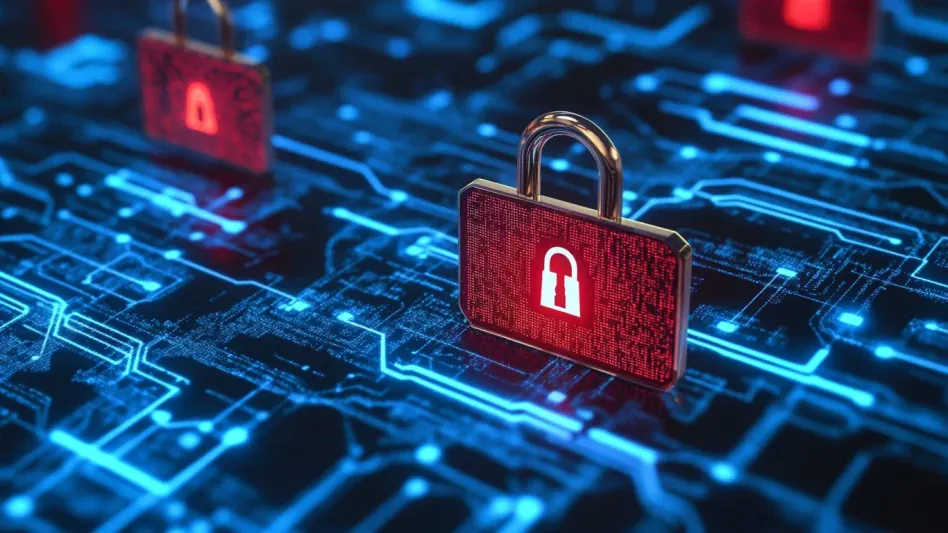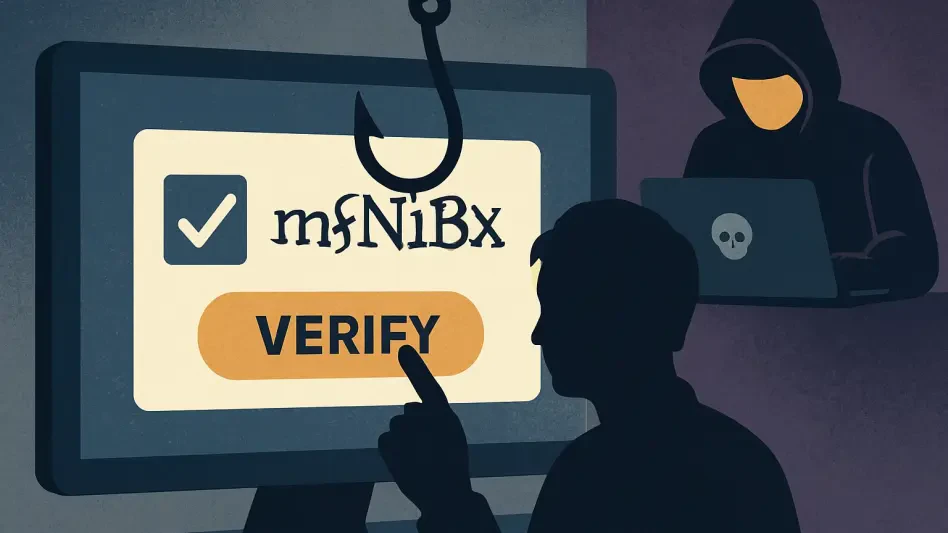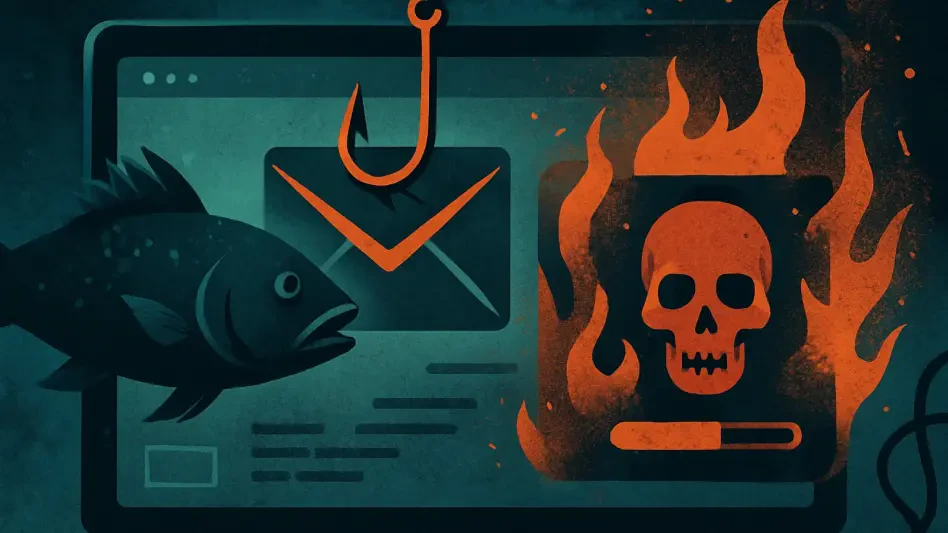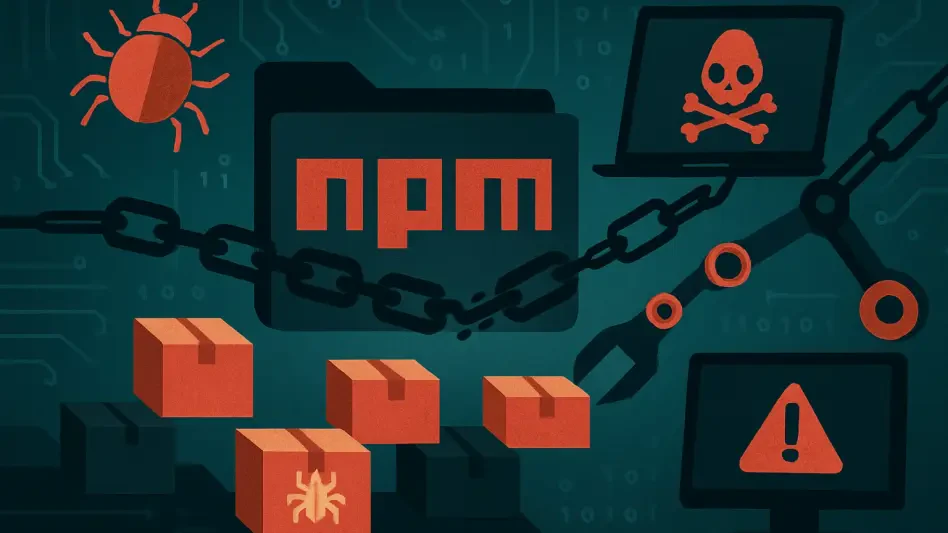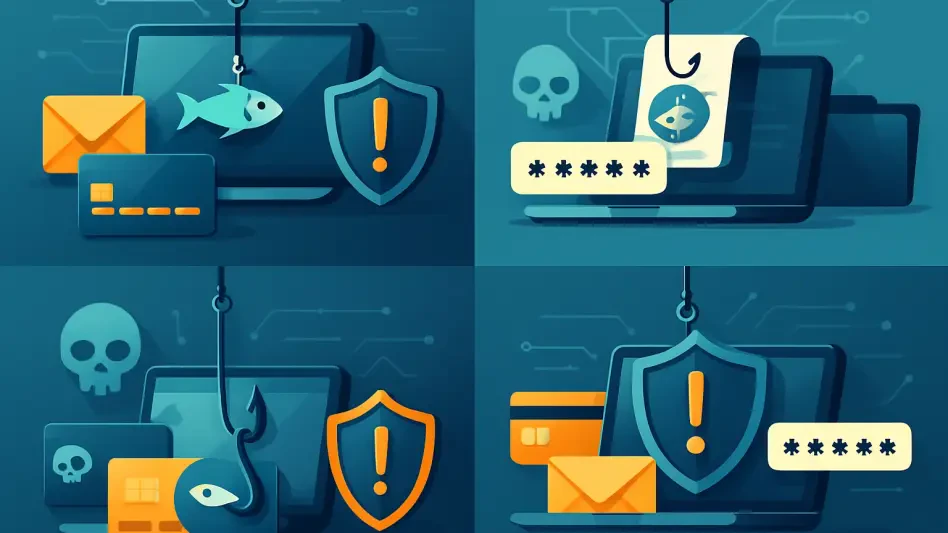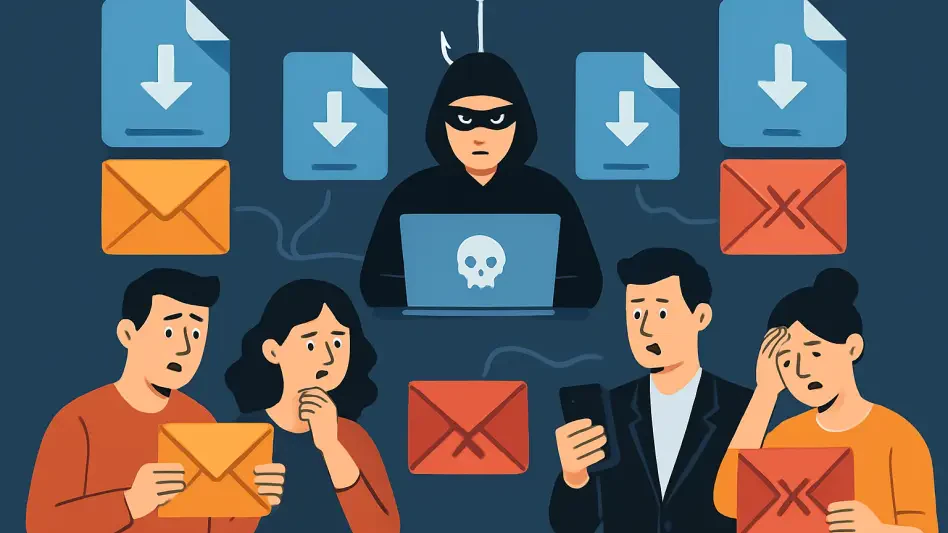As the Philippines continues to advance its digitalization efforts, the nation is expected to face increasingly sophisticated cyber threats by 2025. The growing reliance on digital infrastructure has made the country a prime target for cybercriminals, who employ a variety of tactics to exploit vulnerabilities in businesses, individuals, and sectors. This article delves into the multifaceted cyber threat landscape that the Philippines must navigate, highlighting the key threats and the need for enhanced cybersecurity measures.
The Prevalence of Malware
InfoStealers and Work-From-Home Vulnerabilities
Malware remains the most prevalent cyber threat in the Philippines, with infections often originating from personal devices used for work-related activities. InfoStealers, a particularly destructive type of malware, facilitate unauthorized access to vulnerable portals and data breaches. The widespread adoption of work-from-home arrangements during the COVID-19 pandemic has exacerbated this issue, as employees’ personal devices become entry points for digital attackers. These malware infections can quickly spread from personal to corporate networks, leading to significant data loss and potential financial damage for affected entities.
In addition to the various types of malware, the risk posed by InfoStealers is particularly notable due to their potential to extract sensitive information, such as login credentials and financial data. As the line between personal and professional device usage blurs, companies must take proactive steps to safeguard their networks. This includes implementing endpoint security solutions, utilizing virtual private networks (VPNs), and enforcing strict access controls. Employee awareness and training also play a critical role; organizations must educate their staff about the dangers of downloading unauthorized software and the importance of regular software updates.
The Impact of Personal Device Usage
The use of personal devices for work has blurred the lines between personal and professional cybersecurity, making it easier for cybercriminals to infiltrate systems. This trend underscores the importance of implementing robust security measures for remote work environments, including the use of secure networks, regular software updates, and employee training on cybersecurity best practices. Employers must enforce strict policies to ensure personal devices conform to corporate security standards, such as employing multi-factor authentication (MFA) for accessing critical systems and encrypting sensitive data stored on these devices.
Despite these measures, individual vigilance remains essential to prevent and mitigate potential cyber threats. Employees should be wary of unsolicited emails and links, maintain up-to-date antivirus software, and avoid using public Wi-Fi networks for work-related activities. Moreover, routine security audits and risk assessments can help organizations identify and address vulnerabilities in their remote work setups. By fostering a culture of cybersecurity awareness, businesses can mitigate the risks associated with personal device usage and safeguard their digital assets.
Social Engineering Tactics
Exploiting Human Error
Social engineering is a significant threat, defined by Kaspersky as a technique that exploits human error to gain access to private information or valuables. Various forms of social engineering attacks are discussed, including phishing, inducing fear or urgency, appealing to greed, and exploiting an individual’s helpfulness or curiosity. These attacks typically follow a cycle: preparing by collecting information, infiltrating by building trust, exploiting the victim, and disengaging after completing the scheme. The subtle nature of social engineering makes it challenging to detect, as attackers often manipulate emotions to achieve their objectives without raising immediate suspicion.
In the Philippines, social engineering scams have targeted individuals and organizations alike, with attackers often posing as trusted entities such as banks, government agencies, or service providers. To combat these threats, it is crucial for individuals to stay informed about common tactics and potential red flags. Employers should conduct regular training sessions to educate their workforce on how to recognize and respond to social engineering attempts. Implementing policies, such as requiring verification of requests for sensitive information, can also help minimize the risk of falling victim to these schemes.
The Role of Artificial Intelligence
Artificial intelligence has made social engineering attacks more effective by enabling scammers to mimic trusted figures more convincingly. This technological advancement has increased the success rate of these attacks, making it crucial for individuals and organizations to remain vigilant and adopt advanced security measures to protect against such threats. AI-driven tools can generate highly personalized messages that appear authentic, leveraging publicly available information to craft convincing narratives that lure victims into divulging sensitive data or performing unsafe actions.
As AI continues to evolve, the sophistication of social engineering tactics will likely increase, necessitating the development of equally advanced defense mechanisms. Organizations should integrate AI-driven security solutions to detect anomalies in communication patterns and flag potential social engineering attempts. Continuous monitoring and analysis of online interactions can help identify suspicious behavior early, allowing for timely intervention. By staying ahead of the curve and leveraging emerging technologies, businesses and individuals can better protect themselves against the growing threat of AI-enhanced social engineering.
Phishing and Smishing Threats
Phishing Techniques
Phishing involves masquerading as reputable sources to steal sensitive information and funds. Cybercriminals use various tactics to deceive victims, including fake emails, websites, and messages that appear legitimate. The National Bureau of Investigation in the Philippines has been active in apprehending phishing scammers, but the threat continues to evolve with new techniques and technologies. One of the most common phishing tactics is the use of email spoofing to trick recipients into believing they are communicating with trusted entities, such as their bank or employer.
Despite increased awareness, many individuals continue to fall victim to sophisticated phishing attacks. To combat these threats, organizations should implement email filtering solutions, conduct regular security awareness training, and encourage employees to verify the authenticity of suspicious communications. Additionally, utilizing domain-based message authentication, reporting, and conformance (DMARC) can help prevent email spoofing by verifying the sender’s identity. These measures can significantly reduce the risk of falling prey to phishing scams and protect sensitive information from unauthorized access.
The Rise of Smishing
Smishing, which uses SMS to conduct similar attacks, has also become a prominent threat. New tactics such as device and geo-filtering and the use of IMSI-Catcher devices (also known as cell-site simulators or “stingrays”) have made these threats more sophisticated. These advancements highlight the need for continuous monitoring and updating of security protocols to stay ahead of cybercriminals. Smishing messages often appear to be from legitimate sources, such as financial institutions, online retailers, or government agencies, urging recipients to click on malicious links or provide personal information.
To safeguard against smishing, individuals should be cautious of unsolicited messages and avoid clicking on links or downloading attachments from unknown sources. Mobile security solutions that detect and block malicious SMS can provide an additional layer of protection. Furthermore, organizations can educate their customers about the risks of smishing and the importance of verifying communications before taking any action. By fostering a heightened sense of awareness, both individuals and businesses can better protect themselves from the evolving threat of smishing attacks.
Fake Social Media Profiles
Impersonation and Deception
The rise of fake social media profiles further complicates the cyber threat landscape. Scammers use these profiles to trick victims with fake promotions and services, leveraging AI to impersonate celebrities and other trusted figures. These tactics highlight the shift from traditional to more advanced methods of cyber scams. The use of deepfake technology enables cybercriminals to create highly convincing videos and images, making it even more challenging to distinguish between genuine and fraudulent accounts.
Individuals should be vigilant when interacting with social media profiles, especially those offering deals or requesting personal information. Verifying the authenticity of profiles through official channels and being wary of unsolicited messages can help prevent falling victim to social media scams. Additionally, social media platforms must enhance their efforts to detect and remove fake profiles by leveraging AI and machine learning algorithms. By working together, users and platforms can mitigate the risks posed by fake social media profiles and maintain a safer online environment.
The Impact on Trust and Security
The proliferation of fake social media profiles undermines trust in online interactions and poses significant security risks. Individuals and organizations must be cautious when engaging with online profiles and verify the authenticity of accounts before sharing sensitive information or conducting transactions. Trust is a fundamental component of social media interactions, and the presence of fake profiles erodes this trust, potentially leading to financial loss, identity theft, or reputational damage.
To address this issue, social media platforms should implement robust verification processes and provide users with tools to report suspicious activity. Educating the public about the dangers of interacting with fake profiles and promoting best practices for online security can also help build resilience against these threats. By fostering a culture of vigilance and accountability, both users and platforms can work together to restore trust and security in the digital landscape.
Supply Chain Attacks
Targeting Third-Party Vendors
Supply chain attacks are a critical concern, targeting trusted third-party vendors to compromise their clients’ systems. By injecting malicious code or compromising physical components, cybercriminals can infect a wide range of users. These attacks often serve as stepping stones to larger trading partners, as demonstrated by hackers accessing the US supermarket chain Target’s HVAC contractor to breach its systems. The interconnected nature of supply chains makes them vulnerable, as a breach in one vendor can have a cascading effect on multiple organizations.
To mitigate the risks associated with supply chain attacks, businesses must conduct thorough due diligence when selecting third-party vendors and continuously monitor their security practices. Implementing stringent access controls, requiring regular security assessments, and incorporating contractual obligations for security compliance can help ensure that vendors adhere to the highest cybersecurity standards. Collaboration and information sharing between organizations within the supply chain can also enhance overall security and resilience against potential threats.
Impact on Key Sectors
In the Philippines, supply chain attacks have notably impacted the Finance and Energy sectors, leading to data leaks and credential exposures. These incidents underscore the importance of securing the entire supply chain and implementing stringent security measures for third-party vendors. The financial sector, in particular, relies heavily on third-party service providers for various functions, making it a prime target for cybercriminals seeking to exploit vulnerabilities in the supply chain.
To protect critical sectors from supply chain attacks, organizations must adopt a comprehensive approach to cybersecurity that includes regular vulnerability assessments, employee training, and the deployment of advanced threat detection tools. By fostering a culture of security awareness and ensuring that all stakeholders are committed to robust cybersecurity practices, businesses can enhance their defenses against supply chain attacks and minimize the risk of data breaches and other cyber incidents.
The Persistent Threat of Ransomware
Ransomware Attacks
Ransomware remains a persistent threat, where attackers lock a computer’s files until a ransom is paid. Although the Philippines saw fewer ransomware attacks in 2024 compared to 2023, largely due to limited resources for local threat actors, the country must still bolster its defenses against potential threats as it continues to digitize. The evolving nature of ransomware means that attackers are constantly developing new techniques to bypass security measures and encrypt valuable data, often demanding large sums of money for its release.
To combat ransomware, organizations must adopt comprehensive security strategies, including regular data backups, employee training, and the use of advanced threat detection and response tools. These measures can help mitigate the impact of ransomware attacks and ensure business continuity. Furthermore, establishing incident response plans and conducting regular drills can prepare organizations to respond swiftly and effectively in the event of a ransomware incident, minimizing downtime and potential financial losses.
Strengthening Defenses
To effectively counter ransomware threats, businesses must implement a multi-layered approach to cybersecurity that includes both proactive and reactive measures. Proactive measures, such as network segmentation, endpoint protection, and continuous monitoring, can help detect and isolate potential threats before they cause significant damage. Reactive measures, such as incident response plans and disaster recovery strategies, ensure that organizations can quickly recover from any ransomware attack and restore normal operations.
Moreover, fostering a culture of cybersecurity awareness and encouraging employees to remain vigilant can significantly reduce the likelihood of falling victim to ransomware attacks. Regular training sessions on identifying phishing attempts, safe internet practices, and the importance of reporting suspicious activities can empower employees to act as the first line of defense against cyber threats. By combining advanced technological solutions with human vigilance, organizations can strengthen their defenses against the persistent threat of ransomware and safeguard their digital assets.
The Cybersecurity Landscape in the Philippines
Sector-Specific Threats
The ever-evolving cybersecurity landscape in the Philippines reveals that certain sectors are more vulnerable to cyberattacks than others. According to the report “The Philippine Threat Landscape 2024-2025,” the Banking and Financial Services sector experienced the highest number of attacks, accounting for 66% of the total cyber incidents. This is followed by the Media and Entertainment sector (11%), Technology and IT (8%), Real Estate (6%), Retail and Consumer Goods (5%), Healthcare (2%), Energy and Industrial (1%), Hospitality (0.6%), and Shared Services (0.4%). The significant disparity highlights the varying levels of attractiveness to cybercriminals and the need for sector-specific security measures.
For instance, the Banking and Financial Services sector, being a prime target due to the sensitive nature of financial data, requires stringent regulations and robust cybersecurity infrastructures to safeguard against breaches. On the other hand, sectors like Media and Entertainment need to focus on protecting intellectual property and customer data. Recognizing the unique challenges each sector faces is crucial for developing effective cybersecurity strategies that address specific vulnerabilities and mitigate risks.
Underground Marketplaces and Emerging Threats
As the Philippines progresses in its digitalization efforts, it is anticipated that the nation will encounter increasingly sophisticated cyber threats by 2025. The country’s growing dependence on digital infrastructure has rendered it an attractive target for cybercriminals. These malicious actors employ a range of tactics to exploit vulnerabilities found in businesses, individual users, and various sectors, making cybersecurity a pressing concern.
To address this evolving threat landscape, it is crucial for the Philippines to implement more robust cybersecurity measures. Key areas of focus will include enhancing digital defenses, increasing awareness of cyber threats, and fostering collaboration between the public and private sectors. As cyber threats become more advanced, the importance of a comprehensive and proactive cybersecurity strategy cannot be overstated.
This situation underscores the urgent need for the Philippines to strengthen its cybersecurity infrastructure and to stay ahead of potential threats. By prioritizing cybersecurity initiatives and investing in advanced technologies, the nation can better protect its digital assets and ensure the safety of its digital ecosystem.

